|
TennisOne Lessons Progressive Tennis: “Tactical Development” Wayne Elderton In the first article of this series (“Progressive Tennis: Innovation in development for 5-9 year olds”), the Progressive Tennis system of scale appropriate development was introduced as a package that promotes competitive play for younger players and speeds development. In our last installment (“Progressive Tennis – The Right Stuff”), we outlined some of the reasons Progressive Tennis helps players (and coaches) develop technical skills faster. In this article, we will quickly review the technical advantages but also explore the advantages for developing tactics. It should be noted that the players shown in this, and previous, articles have been developed in group training situations (one coach to six students). At the time of the videos, they were not taking any private lessons. Typically, they came two times per week for one hour (1/2 Court) or 1.5 hours (3/4 Court). Over the summer, most of them played less often than during the other seasons. The better ½ Court players shown had trained for 36 weeks, and the ¾ Court players for about twice that amount.
Technical Advantages Here is a quick summary of just some of the technical elements that are easier to develop using scaled equipment and courts: Groundstrokes
Volleys
Serve
Less Injuries?The final technical advantage is injury reduction. The physical demands of the game on junior players has increased over the last decade. The full-body technique required to hit the ball harder and with more spin are being utilized by younger and younger players. This can be very hard on a developing body. The constant hitting of adult balls, with adult racquets, over the greater distances of the adult sized court, creates unnecessary wear and tear on young bodies. Technical ConclusionAlthough some coaches who have not used the equipment in this way (to develop advanced technique) may disagree with the Progressive tennis concept, no coach I am aware of who has used the equipment ever goes back (maybe someone will email me). As Head of Coaching Certification for British Columbia, I have trained hundreds of coaches in this approach. After experiencing the appropriate equipment, not one has ever said the adult equipment is better for developing the above listed elements. Tactical Development
Technique is not the only element hurt by inappropriate equipment. Good tactical development is also at stake. Here are a few tactical aspects affected by scale: Style of Play Development: Kids on a full-size court have far more ground to cover than on an appropriately scaled court. As a result, they tend to hit high arcing balls which allows them more time to chase shots down. The style of play becomes very defensive. With Progressive Tennis, players can successfully explore all-court, counter-puncher, or net rushing styles. The smaller racquet and court also affords them the ability to develop one-handed or two-handed backhand styles. Players even come to the net regularly (something rarely seen when kids use full-sized equipment and courts since it is far too difficult to cover the larger court). Phase of Play Development: With adult equipment and courts, defense is the primary phase utilized. The other phases of play (attack, forcing, counter, and a proper neutral rally) are all too difficult to successfully execute. Scaled tennis allows all the phases to be developed. Shot Selection Development: Varying the ball is extremely difficult with regulation equipment and courts. Players get stuck hitting high arcs to the middle of the court. Angles, spins, drives, and drops are all available with the scaled equipment (We know because players in our under 10 program hit all of these shots). Why would a coach settle for a player who is just consistent? Players in Progressive Tennis can play and make the same decisions they will use when they are older. Players developed with Progressive Tennis look just like the pros when they play, just smaller. Developing Tactics (while working on techniques): In a Game-based approach (see my previous articles in the archive), technique should be in the service of tactics. The traditional methodology was, learn strokes first, tactics later. In a GBA, it’s tactics first, then technique to accomplish the tactics. Tactical development can begin even with under 8 players when using a ½ Court. The way we have organized this in Canada is to split the court into a grid. This “Tactical Grid” helps both coach and player work on placement and consistency. The goal for players graduating from our ½ Court program is to master “Consistent Precision.”
Diagram 1 shows an example of the “4 Square” grid (marked with letters A-D). As players improve, they graduate to a, “6 Square” grid (Diagram 2, marked with numbers 1-6). As you will see on the video clips later in this article, a coach doesn’t have to make the full grid for every lesson. They just need a few drop-down lines to make the part of the grid that is relevant for the skill being worked on.
The first tactic a player would learn is to cooperatively rally with a partner. The tactic here is, consistency wins points! Once a player can rally (and accomplish neutral volleys and serves), they need to learn to move the balls around. Player’s miss more when they are on the move. To practice these tactics, the grid is used for players to aim for. Here is a list of the basic tactics that would be developed and some clips of some of them being learned and practiced by our under 8 ½ Court players. Baseline Play:
Net play:
Serve:
At this point, many coaches notice that these are the same things that older performance players practice. That’s the point! These skills are what makes players better. The scaled equipment makes it quicker and easier to start practicing actual effective tennis in realistic “live" ball situations. Typically, with adult equipment and courts, coaches need to basket feed younger players since they can’t do these things with each other. The problem is, there is a poor transfer from doing the skill in a basket fed situation to a live ball or game-play situation. ConclusionThe ITF is endorsing this method as part of their world-wide “Tennis…Play and Stay” initiative. The USTA is also launching their new “Quick Start” initiative for ½ Court and ¾ Court play (called 36 foot, and 60 foot courts in the US). My hope is that this will be the dawn of a new era to encourage growth and retention of young tennis players. Parents and coaches have an unprecedented opportunity to help tennis become more accessible for young children. In this article, we have seen the end picture for under 8 ½ Court Development. In future articles, we will explore more specific exercises and drills used to develop under 8 and under 10 players in the first steps of Progressive Tennis.
Your comments are welcome. Let us know what you think about Wayne Elderton's article by emailing us here at TennisOne.
|

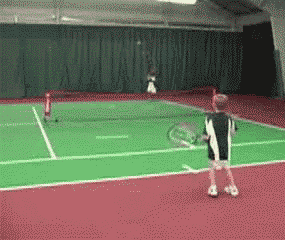
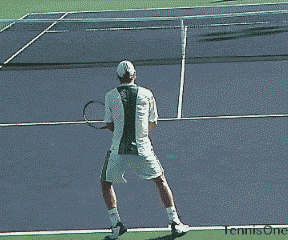
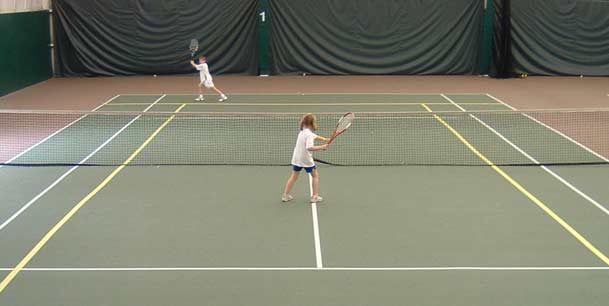
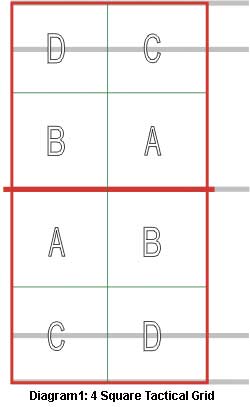
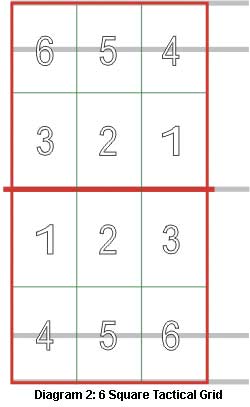
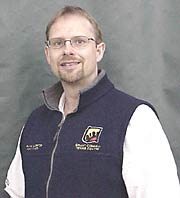 Wayne Elderton
Wayne Elderton